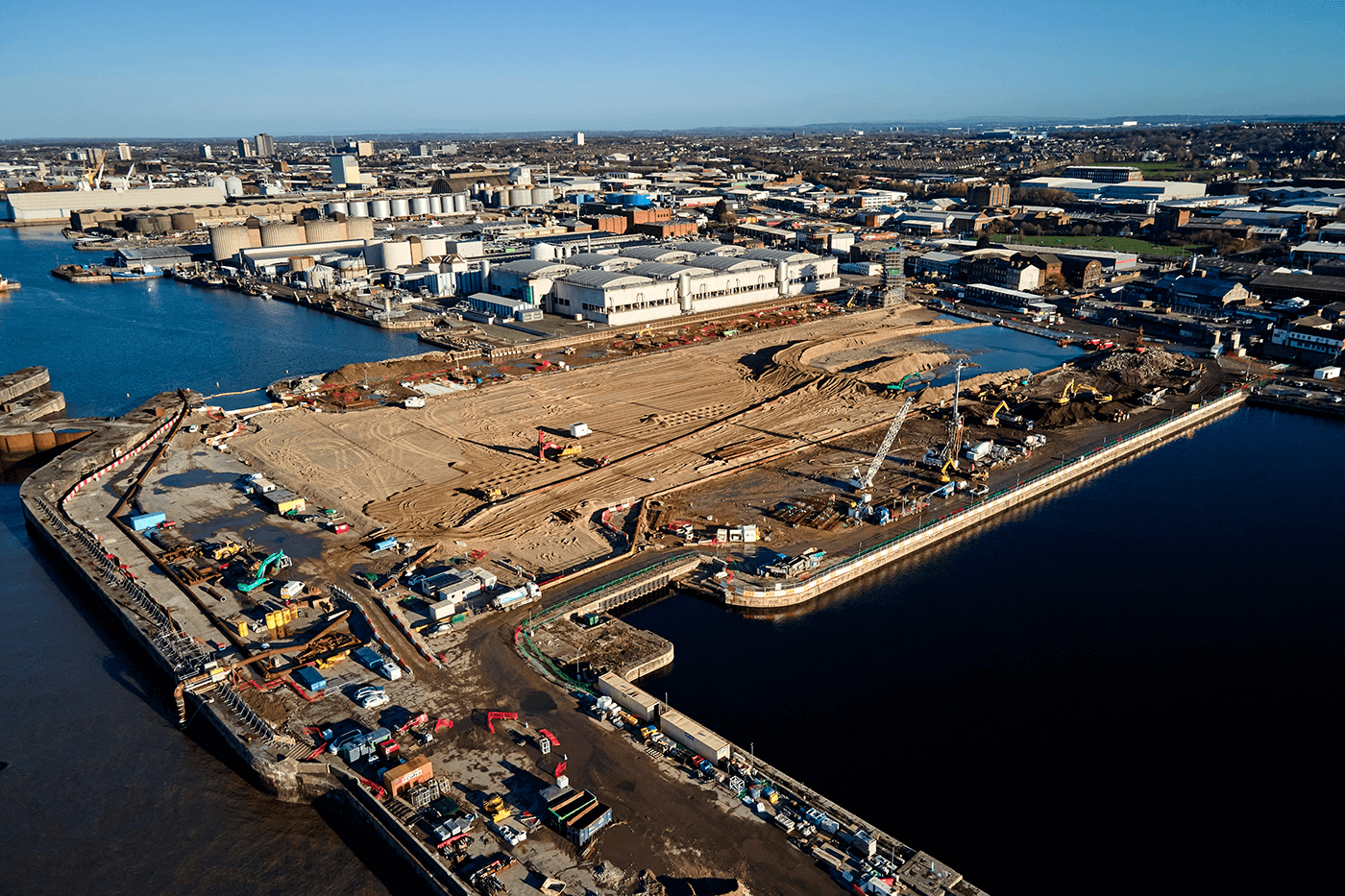

Sports Stadium
Saving time and avoiding disruption during stadium construction on a Grade II listed site
The challenge
The stadium, being built by a major Tier 1 contractor sits atop a grade II listed structure from the mid nineteenth century. A number of features of historic importance remain around the site which must be protected throughout the construction process. In fact, authorities initially objected to the plans over concerns for these structures, hence the critical importance of the monitoring activity.
During the construction process, a 325m long and 125m wide dock was filled in and 2,500 concrete piles were built to form the foundation of the stadium. It is intended that should it ever be necessary, the site could be reverse engineered back to its original format.
One tool used in the construction was a 94 tonne excavator with a 16 tonne vertical hammer attachment with a 2m diameter base. The hammer compacts each point at a rate of approximately 40 blows per minute to create 2m diameter craters 3m apart. A total of 2,500 craters, each around 16m deep, will be drilled across the site.
Alongside the dock walls and listed assets which had to be protected, the contractor had to monitor the stability and soundness of the new stadium structure. They used a wide range of monitoring sensors from many different manufacturers, including extensometers, tilts and inclinometers in isolation and in arrays and Automated Total Stations.
These generate vast amounts of data across different platforms, which had to be readily available to various stakeholders, including the Instrumentation and Monitoring and Engineering teams.
This made it difficult to ensure the engineering team was notified quickly if or when movement occurred.